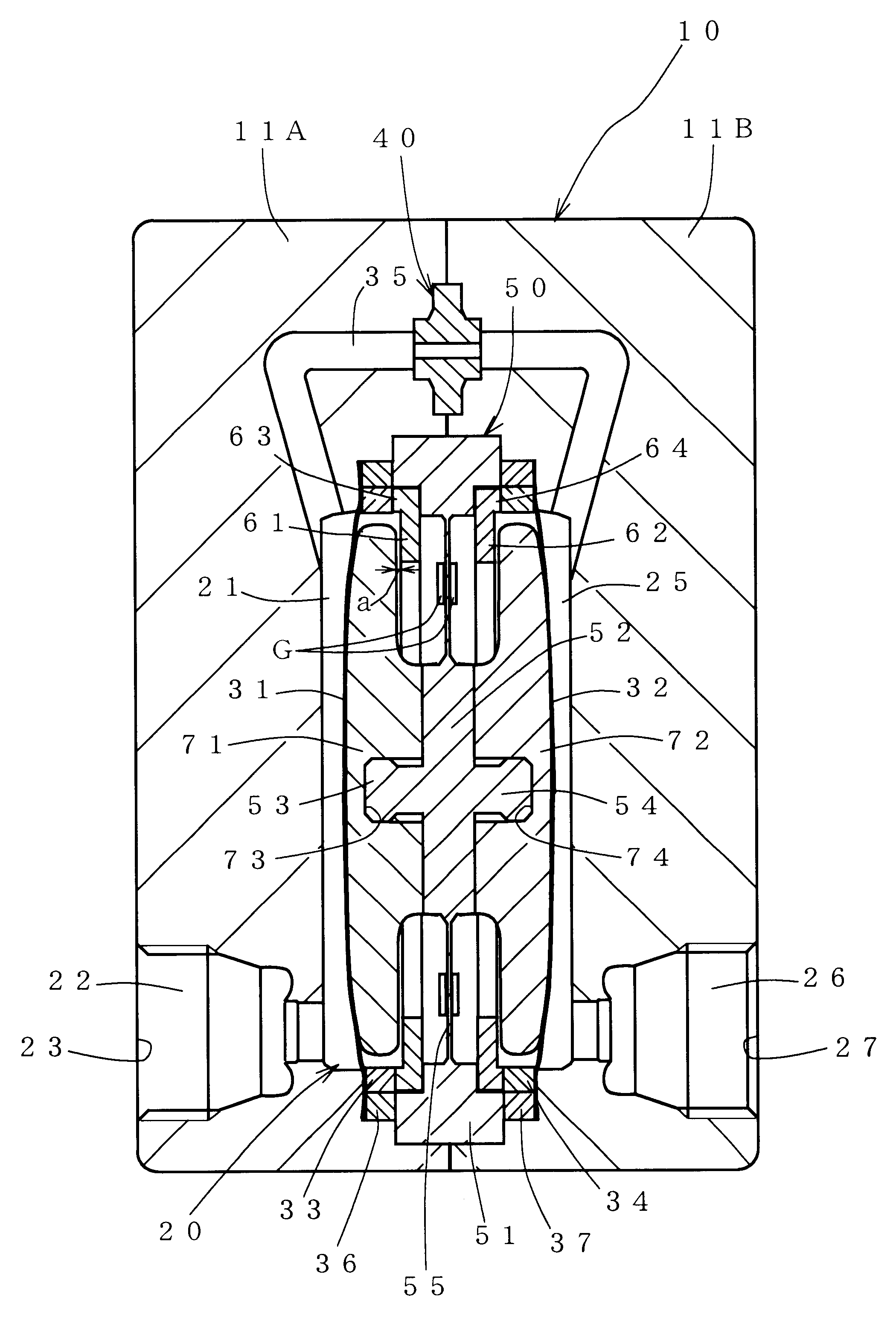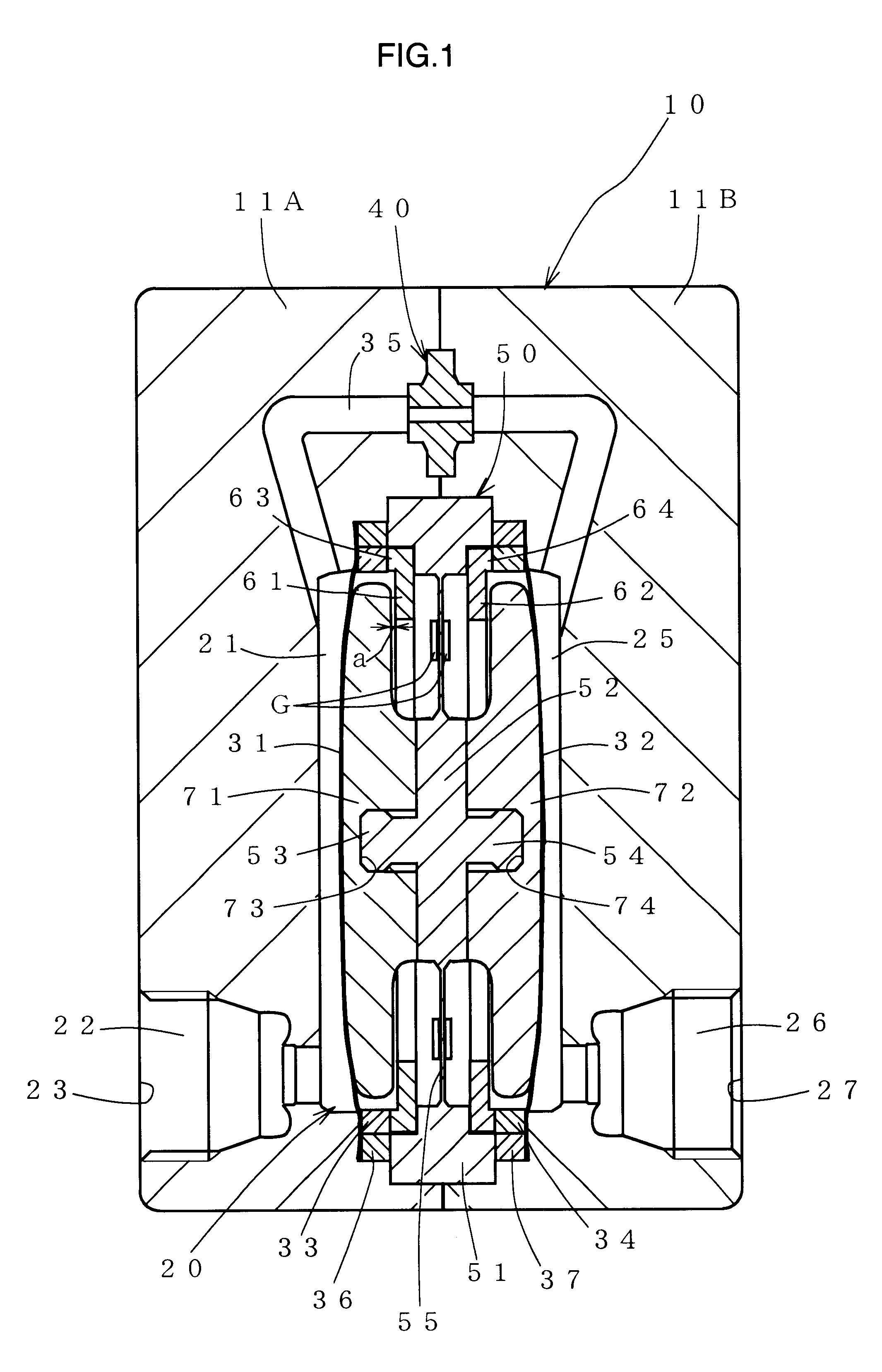Dual-diaphragm differential pressure flow rate sensor
a flow rate sensor and diaphragm technology, applied in the direction of instruments, liquid/fluent solid measurement, pressure difference measurement between multiple valves, etc., can solve the problems of low sensitivity, frequent correction and zero adjustment, and sensitivity and pressure resistan
- Summary
- Abstract
- Description
- Claims
- Application Information
AI Technical Summary
Benefits of technology
Problems solved by technology
Method used
Image
Examples
Embodiment Construction
As shown in FIGS. 1 to 3, a flow rate sensor 10 according to the invention is used for measuring a very small flow rate of ultrahigh pure water or chemical liquids as described above. Two diaphragms, i.e. a first diaphragm 31 and a second diaphragm 32 receive the pressure fluctuations of the fluid passing through a chamber 20. The load difference between the first and second diaphragms 31, 32 is detected by a load difference sensor 50 as an amount of displacement thereby to detect the flow rate of the fluid.
Especially, the flow rate sensor 10 according to the invention has the feature in that the diaphragms 31, 32 (FIGS. 1, 2) or the load difference sensor 50 (FIG. 3) include displacement limiting members 61, 62 (FIGS. 1, 2), 66, 67 (FIG. 3), respectively, in order that the displacement generated by the fluid pressure fluctuations received by the first diaphragm 31 and the second diaphragm 32 may not exceed a predetermined amount. The displacement limiting members is not necessarily...
PUM
| Property | Measurement | Unit |
|---|---|---|
| displacement | aaaaa | aaaaa |
| flow rate | aaaaa | aaaaa |
| flow rate | aaaaa | aaaaa |
Abstract
Description
Claims
Application Information
 Login to View More
Login to View More - R&D
- Intellectual Property
- Life Sciences
- Materials
- Tech Scout
- Unparalleled Data Quality
- Higher Quality Content
- 60% Fewer Hallucinations
Browse by: Latest US Patents, China's latest patents, Technical Efficacy Thesaurus, Application Domain, Technology Topic, Popular Technical Reports.
© 2025 PatSnap. All rights reserved.Legal|Privacy policy|Modern Slavery Act Transparency Statement|Sitemap|About US| Contact US: help@patsnap.com



